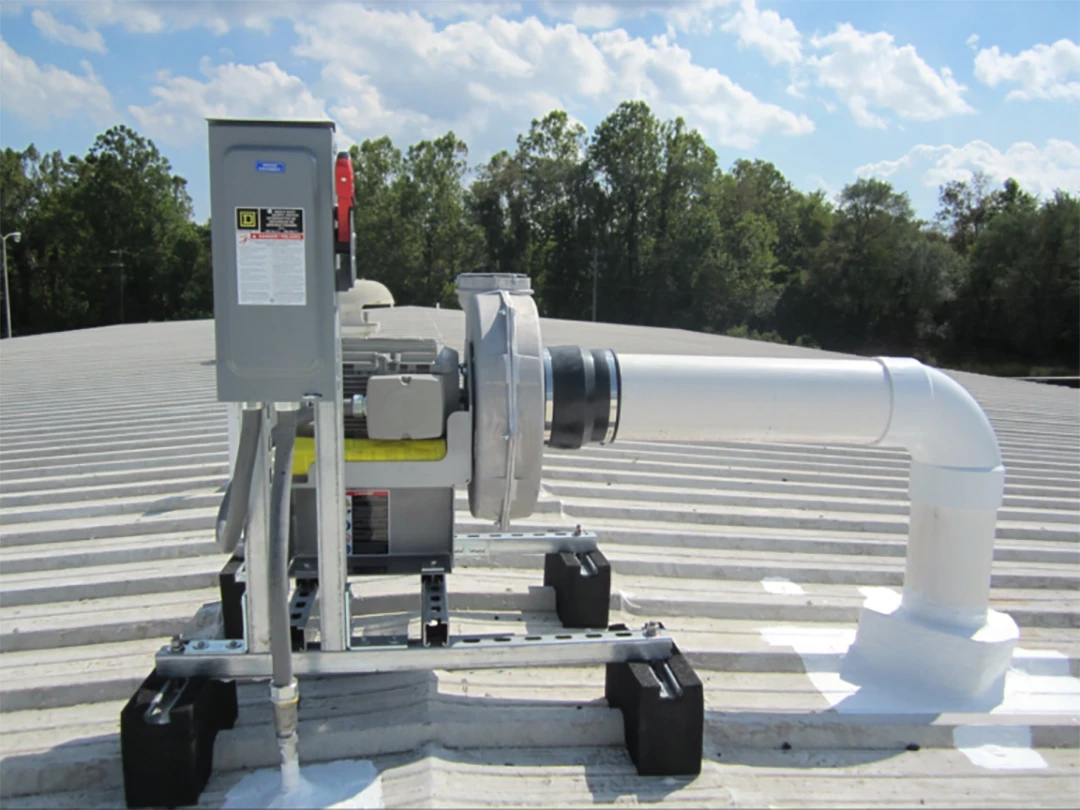
Understanding Methane Risks
Methane is a colorless, odorless gas that is often found in the subsurface of areas where organic matter has decomposed, such as landfills, coal mines, and areas with significant agricultural activity. It can seep into buildings through cracks in foundations, poorly sealed openings, and other pathways. Methane is highly flammable and can create explosive mixtures with air, making its management essential in any area where it might be present.
Health and Safety Concerns
Several health and safety concerns should be taken care and those includes the following.
Methane poses several risks:
Explosive Hazard: Methane can form explosive mixtures with air if it accumulates in confined spaces. A small spark or flame can ignite these mixtures, leading to potentially devastating explosions.
Asphyxiation: In high concentrations, methane can displace oxygen, leading to a risk of asphyxiation and other health issues.
Environmental Impact: Methane is a potent greenhouse gas, with a global warming potential much greater than carbon dioxide. Its release into the atmosphere contributes significantly to climate change.
Key Components of Methane Mitigation Systems
Effective methane mitigation systems are designed to prevent the accumulation of methane and ensure its safe removal. These systems typically include several key components:
1. Gas Detection Systems
Gas detection is the first line of defense in methane mitigation. These systems use sensors to continuously monitor methane levels in the building or surrounding areas. Key features to look for in gas detection systems include:
Real-Time Monitoring: Provides immediate data on methane levels, allowing for prompt response to any dangerous situations.
Alarms and Alerts: Integrated alarms to notify occupants and facility managers when methane concentrations exceed safe levels.
Data Logging: Records methane levels over time, aiding in trend analysis and system performance evaluation.
2. Ventilation Systems
Proper ventilation is crucial for diluting and dispersing methane gas, preventing it from reaching hazardous concentrations. Common ventilation methods include:
Sub-Slab Ventilation: For buildings with concrete slabs, this method involves installing a ventilation system beneath the slab to remove methane before it can enter the building.
Active Ventilation: Uses fans and ductwork to continuously ventilate spaces and remove methane gas. This can be particularly effective in areas prone to high methane concentrations.
Natural Ventilation: Utilizes natural airflow through openings in the building structure to help disperse methane. While less controlled than mechanical ventilation, it can be part of a comprehensive mitigation strategy.
3. Gas Barrier Systems
Gas barriers are physical barriers designed to prevent methane from entering buildings through the foundation or other openings. Types of gas barriers include:
Membranes: Flexible sheets or membranes installed beneath or around the building foundation to block methane migration.
Sealants: Specially formulated sealants applied to joints, cracks, and penetrations to create a gas-tight seal.
Composite Systems: Combine membranes and sealants for enhanced protection against methane intrusion.
4. Extraction Systems
Methane extraction systems remove methane from beneath or around a building before it can enter the structure. Key components include:
Sumps and Wells: Designed to collect and remove methane from beneath the building foundation. These systems can be integrated with active ventilation systems for improved effectiveness.
Pumps and Fans: Used to draw methane from extraction points and vent it safely away from the building. These systems must be regularly maintained to ensure optimal performance.
Design and Installation Considerations
Designing and installing an effective methane mitigation system involves several important considerations:
1. Site Assessment
Before installation, a thorough site assessment is essential. This includes:
Methane Testing: Conducting tests to measure methane levels and identify potential sources of gas infiltration.
Geological Survey: Assessing soil and subsurface conditions to determine the most appropriate mitigation methods.
Building Evaluation: Analyzing the building’s design and construction to identify potential entry points for methane and determine the best mitigation strategies.
2. System Design
The design of a methane mitigation system should be tailored to the specific needs of the site and building. Key design considerations include:
Capacity and Coverage: Ensuring the system is sized and configured to handle the expected volume of methane.
Integration with Building Systems: Coordinating the methane mitigation system with existing building systems, such as HVAC, to optimize performance and efficiency.
Compliance with Regulations: Ensuring the system meets local building codes and environmental regulations.
3. Installation and Maintenance
Proper installation and ongoing maintenance are critical for the effectiveness of a methane mitigation system:
Professional Installation: Engage experienced professionals to install the system, ensuring that all components are correctly positioned and functioning.
Regular Maintenance: Implement a maintenance schedule for inspecting and servicing gas detection systems, ventilation systems, and other components. Regular maintenance helps to ensure the system operates effectively and any issues are promptly addressed.
Regulatory and Compliance Issues
Compliance with local and national regulations is crucial for methane mitigation. Regulations may vary by region, but common requirements include:
Building Codes: Adherence to building codes that specify requirements for methane mitigation in areas prone to gas accumulation.
Environmental Regulations: Compliance with environmental regulations related to methane emissions and gas management.
Occupational Safety Standards: Ensuring that the mitigation system meets occupational safety standards to protect workers and building occupants.
The Bottom Line
Methane mitigation is a critical aspect of ensuring safety and environmental protection in buildings located in areas prone to methane gas. By implementing a comprehensive mitigation system, including gas detection, ventilation, barriers, and extraction systems, property owners can effectively manage the risks associated with methane. Proper design, installation, and maintenance are essential to ensuring the system’s effectiveness and compliance with regulatory standards. By addressing these factors, you can create a safer, healthier environment and contribute to mitigating the broader environmental impacts of methane emissions.
Comments
comments